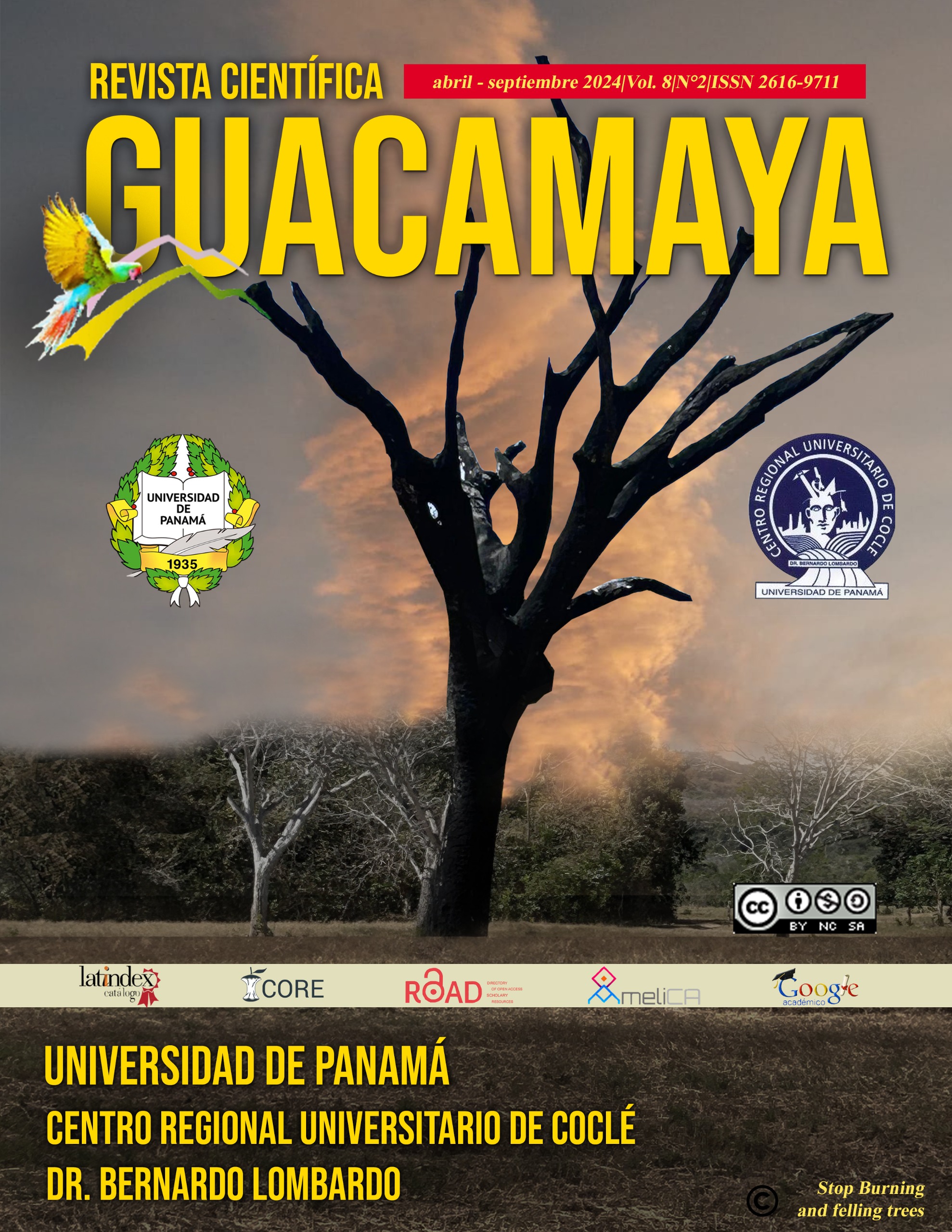

Copyright (c) 2024 Revista Científica Guacamaya

This work is licensed under a Creative Commons Attribution-NonCommercial-ShareAlike 4.0 International License.
Legumes like machete ice-cream-bean (Inga spectabilis [Vahl] Willd.) and pigeon pea (Cajanus cajan [L.] Huth) contribute to the productive and sustainable diversification of the agroecosystem; however, they are often affected by herbivorous insects. The aim of the study was to identify herbivorous insects associated with these crops in Bugaba – Chiriquí, Panama. For this, five visits were made between January 2022 and July 2023 to a farm located in La Estrella, Bugaba; in which three severely defoliated machete ice-cream-bean trees and five pigeon pea plants were followed up, inspecting foliage, flowers and pods. A photographic record was taken and samples were collected in plastic containers, to later prepare, review and identify them in the laboratory. According to the results, the species responsible for the defoliation in machete ice-cream-bean was Megalopyge lanata (Stoll, 1780) (Lepidoptera: Megalopygidae), commonly known as puss larva or flannel moth; Membracis mexicana (Guerin-Meneville, 1829) (Hemiptera: Membracidae) was also found on this plant. In the case of the pigeon pea, the species found corresponded to Crypticerya sp. (Hemiptera: Monophlebidae), Guayaquila gracilicornis (Stål, 1869) (Hemiptera: Membracidae) associated with Camponotus sp. (Hymenoptera: Formicidae) and Trigona sp. (Hymenoptera: Apidae). Species like M. lanata can cause accidents due to erucism (larvae) and lepidopterism (adults); in addition, previous research has reported stinging larvae of the genus Automeris (Lepidoptera: Saturniidae) associated with pigeon peas. In summary, there are at least two species of herbivorous insects associated with the machete ice-cream-bean and three with the pigeon pea in La Estrella, Bugaba; which should be further investigated.